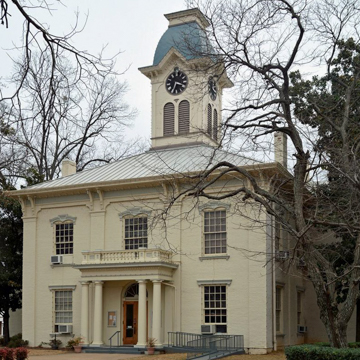Van Buren was established in 1818 beside the Arkansas River and is one of the earliest settlements in western Arkansas. First known as Phillips Landing, the community was renamed for President Martin Van Buren in 1838 and designated the county seat. This two-story courthouse’s origins lie in an 1841 structure that burned in 1876. Its surviving walls were incorporated into the new structure, to which was added a central clock tower, two wings, and a one-story Doric portico. In 1940, a three-story addition more than doubled the size of the courthouse. The bench in the long courtroom on the second floor is located beneath a flattened arch across the entire end of the courtroom.
On the courthouse grounds is the c. 1820 one-room log school where journalist and attorney Albert Pike was reputed to have taught in 1833. Also on the grounds is a 2003 bronze replica of sculptor Giuseppe Moretti’s gold-painted iron statue of Hebe in a fountain. The original was placed here in 1908 but had fallen into such disrepair that a replacement was needed.















